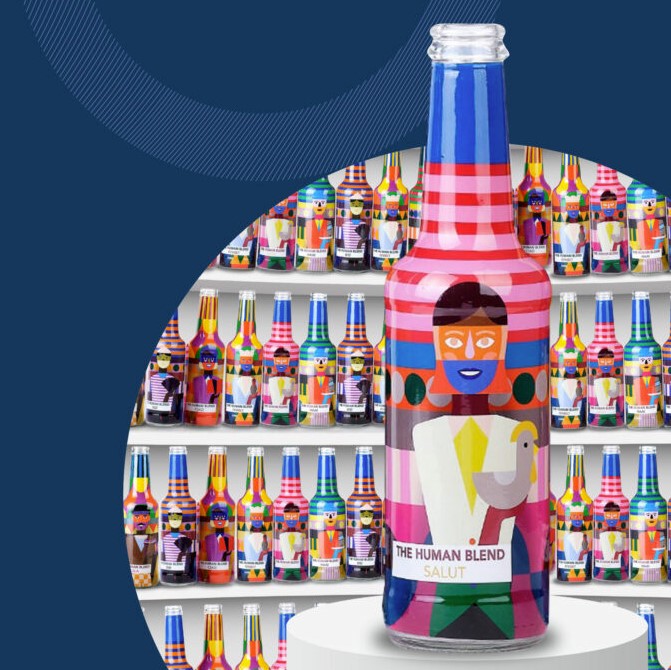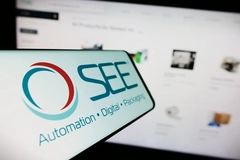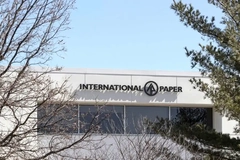The rise of digital printing: How brands are building loyalty with digital labeling
18 Jan 2023 --- For the year ahead, customization and differentiation through digital print packaging solutions are predicted to become essential tools for driving customer relations and building brand loyalty. Speaking to PackagingInsights, printing experts Bobst and Vista discern the emerging key trends of the year in the digital printing designs space.
“We expect to see a continued upward trajectory for digital printing technology in all industries,” says Francois Martin, marketing director of labels at Bobst.
“In the label market, for example, 30% of the market value is already digital and 50% will arrive soon. Digital comes in addition to conventional technology and helps all converters to optimize their entire production floor. The challenge is to manage both together, as none can do it all.”
Additionally, he says the steady rise of e-commerce will continue through 2023 and generate demand for digital packaging production, since e-commerce requires agility and speed.
“Web-to-print – very popular in commercial printing – is now penetrating the packaging sector as web-to-pack. We will see major relevant platforms in labels, folding cartons and even corrugated. Ordering packaging for small companies will get easier,” predicts Martin.
Moreover, short run, versioning, and customization are other demands of digital printing solutions that are sought after as brands look to optimize and control supply chain costs.
“Digital printing has opened the doors for customer-centric philosophy to take off, making it easier to provide personalized printing, specialty enhancements and technology-enabled packaging solutions to help brands differentiate themselves,” Javier Adán, general manager of packaging & labels at VistaPrint, tells us. The steady rise of e-commerce will continue through 2023 and generate demand for digital packaging production, according to Bobst (Image Credit: Bobst).
The steady rise of e-commerce will continue through 2023 and generate demand for digital packaging production, according to Bobst (Image Credit: Bobst).
Digitalization and variable printing
Global packaging group All4Labels recently unveiled The Human Blend campaign in partnership with HP Indigo, responding to the emerging needs of Gen Z. “Research shows that 53% of Gen Z want brands to offer personalized or customized products, 69% are more likely to purchase from companies that openly share their values, and 73% would pay more for a sustainable product,” the packager shares.
The Human Blend project showcases digital sleeves that respond to these trends with creative solutions. The project combines graphic elements to create new designs for digitally printed sleeves using the HP SmartStream Mosaic proprietary SW suite.
A set of typical human features representing different ethnic groups and cultures were designed to form an image of a person. HP SmartStream Mosaic’s algorithm then randomized between those elements and backgrounds to create thousands of possible sleeves.
The result is customized packaging created by combining and blending the various elements into characters that reflect a multicultural richness. “Variable data printing is an outstanding opportunity for brand owners that want to innovate their packaging and offer an unforgettable brand experience to consumers,” All4Labels shares.
“The Human Blend shows that variable information data is only a starting point for digital printing and that item-level customization can be taken to the next level.”
Customized and colorful designs
Market researcher Innova Market Insights reports that companies increasingly seek support with digital printing designs to attract new consumers in different regions. Photographic elements, retro-styled coloring and artistic ingredient illustrations are digital print design trends highlighted by Innova Market Insights (Image Credit: VistaPrint).
Photographic elements, retro-styled coloring and artistic ingredient illustrations are digital print design trends highlighted by Innova Market Insights (Image Credit: VistaPrint).
“Packaging and digital printing are tools brands can use to tell their story and stand out to the consumer. Bright colors, vivid graphics and a playful layout are design concepts that can make a product more captivating on the shelf and appeal to different audiences,” it says.
According to the researcher, other trends in new product launches include photographic elements, retro-styled coloring and artistic ingredient illustrations.
“Economic factors influence [pack] design through a greater focus on impactful designs that help brands stand out and drive engagement with customers,” Adán at VistaPrint continues.
“In 2023, we expect the trends we have seen in previous years to be consolidated. We see our customers designing with bright, bold, highly saturated colors, using patterns and incorporating laminations and finishes.”
“Paired with an eye-catching design, the use of QR codes and connected packaging is another way to elevate the customer experience and create a memorable unboxing experience,” details Adán.
All4Labels-founded brand QR Marketing details how QR codes printed on labels and packaging can provide intelligent solutions. “QR Codes are now one of the best tools to build a brand identity. It is essential to build an innovative marketing campaign to enhance your brand positioning in an extremely competitive environment,” it says.
Connected packaging with QR codes and Near-field communication (NFC) chips is increasingly becoming the norm. “The ability to connect physical and digital worlds through the use of QR Codes in printed packaging is a key trend for 2023,” Adán tells us. One of the greatest challenges of producing digitally printed packaging is providing cost-effective, low runs (Image Credit: Bobst).
One of the greatest challenges of producing digitally printed packaging is providing cost-effective, low runs (Image Credit: Bobst).
Headwinds for supply chain
Packaging personalization and customization, which was growing pre-COVID-19, did slow down, according to Martin at Bobst.
“But the trend is set to grow. The economic upheavals have set the supply chain in the center of the discussion, accelerating demand for serialization and track and trace solutions.”
“In addition, supply chain cost pressure is increasing the use of Extended Color Gamut (ECG) printing to reduce cost and ink waste. Overall, we see brand owners rethinking how they design packaging – designing more effectively along the famous five principles – material, shape, color, costs and sustainability. This leads to innovation, new packages and overall less waste,” Martin shares.
On top of that, Adán says enhancing capabilities to reduce minimum order quantities, production time and cost will be significant as the future of digital printing evolves.
“One of the greatest challenges of producing digitally printed packaging is providing cost-effective, low runs. The solution is finding economies of scale to offset the cost, subject to the type of machinery used in production,” he remarks.
According to Adán, digital printing designs are faring well in consumer demand due to the continued improvement in print quality, shorter lead times and ability to provide lower minimum order quantities to customers. “This reduces the price point and makes custom-printed products more accessible to small businesses.”
Sustainable digital printing solutions
Digital printing technology provides customers more flexibility with shorter runs (lower minimum order quantities) and higher levels of personalization. In other words, digital print lowers the barriers to entry into the personalized packaging market. All4Labels recently unveiled The Human Blend campaign in partnership with HP Indigo (Image Credit: All4Labels).
All4Labels recently unveiled The Human Blend campaign in partnership with HP Indigo (Image Credit: All4Labels).
Regarding a shift toward environmentally sustainable developments within the digital printing space, Adán remarks: “[Environmental] sustainability is a key focus within the industry and will continue to be as both consumers and companies seek to minimize their environmental impact.”
“Our mass customization model can help right-size customer orders by ensuring they are aggregated with those of other customers and fulfilled only after a customer purchases it. This can introduce customers to the opportunities of customized packaging while simultaneously reducing the risk of waste.”
In addition, Adán is “most certain” that there will be a push for continued developments related to sustainability in the year ahead.
Martin also spotlights that environmental sustainability is one of the main arguments linked to digital printing.
“The reason is clear, with digital, you know precisely how much-printed material you need, reducing waste – and without plates or clichés or cutting tools,” Martin illustrates.
“Overall, the entire packaging industry is moving toward more sustainable pack substrates. For instance, we see a shift from plastic to paper and materials. 2023 is likely to see digital optimization for use on new sustainable substrates – for example, thinner liners or substrates involving recycled materials.”
By Radhika Sikaria












